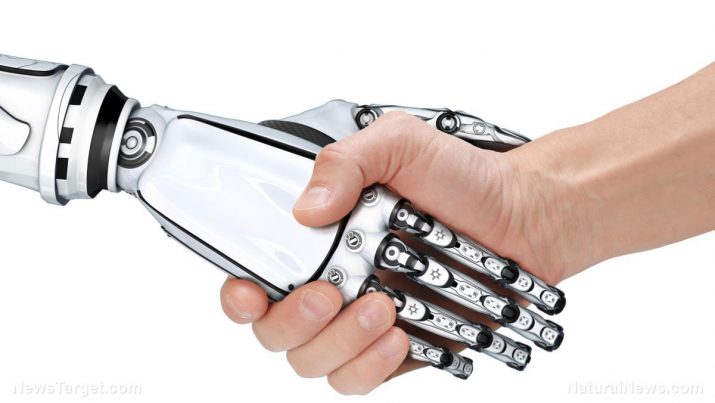
Human-like Terminator rescue droids to become our “fourth emergency service” in 50 years
Sunday, April 08, 2018 by Frances Bloomfield
http://www.futuresciencenews.com/2018-04-08-human-like-terminator-rescue-droids-to-become-our-fourth-emergency-service-in-50-years.html

Are you ready to have robots rescue you from an emergency situation? Come 2068, this may be the reality that we’ll live in.
That’s the prediction put forth by Mat Shore, author and global authority on artificial intelligence and futuristic technology. He believes that Britain’s “fourth emergency service” will comprise hundreds of human-like, autonomous droids. Within 50 years, these robots will be undertaking the emergency situations that would imperil human rescuers.
Snowstorms are a prime example. In March of this year, Britain was besieged by a flurry of high-impact winter weather events, the most infamous of which were Storm Emma and the Beast from the East. Robots would be particularly useful in these circumstances. Their incredible endurance and ability to shrug off freezing temperatures would allow them to easily recover stranded people and upright overturned vehicles. The latter would be of little issue to robots, given that scientists have already developed synthetic muscles that imbue automation with strength that surpasses our own. (Related: Scientists develop Terminator robot “super strength” material that could allow military hunter-killers to strangle you to death.)
“In times of crisis, the need to innovate – and to think innovatively – becomes more important than ever,” Shore remarked at the U.K. launch of his newest book, The Seven Heavenly Habits of Innovation. “The Beast from the East has clearly highlighted a variety of shortcomings in existing technology, most of which is outdated and unable to cope with the extreme temperatures and conditions.”
He continued: “Innovators will now be looking at ways to aid the public and to help the rescue services, and there is no doubt that the development of robotics generally – and in cyborgs in particular – will be at the forefront of their minds.”
Shore cited the likes of nuclear catastrophes and natural disasters as instances wherein robots and cyborgs would be an “urgent priority.” These would necessitate the creation of robots composed of biomechatronic and organic body parts, among other innovative features.
And from performing rescue missions, robots would then move on to carrying out tasks that require a more delicate touch. These would range from doling out emergency first aid to providing “words of human-like comfort.”
Though with the way things are currently, that future may be coming sooner rather than later. Just look at Zipline, a drone delivery startup that made headlines in 2016 for using small, autonomous aircraft to deliver blood products to rural clinics. According to Spectrum.IEEE.org, Zipline is now responsible for 20 percent of rural Rwanda’s blood supply. Moreover, the U.S. may be seeing the tiny drones on their own shores in due time.
“Everything has changed,” said Zipline CEO Keller Rinaudo. He explained that the company has put tremendous effort into redesigning the drones, making them faster and more capable of carrying bigger payloads. “We’ve spent the last year taking everything we learned from operating the system at national scale, and integrating that into a totally new platform. All of these iterations and improvements have come directly from serving patients, saving lives, and figuring out what those people need from a better system.”
It will only go up from here. Perhaps drones will go from delivering blood to airlifting robot rescue workers. And who knows, maybe by 2030 or so, the first of the rescuer droids will be rolled out for testing.
Visit Robotics.news for more news about robots and artificial intelligence.
Sources include:
Tagged Under: Tags: artificial intelligence, autonomous droids, biomechatronics, droids, emergencies, emergency droids, emergency services, first aid, rescue, rescue droids, rescue robots, robotics, robots, science and technology





